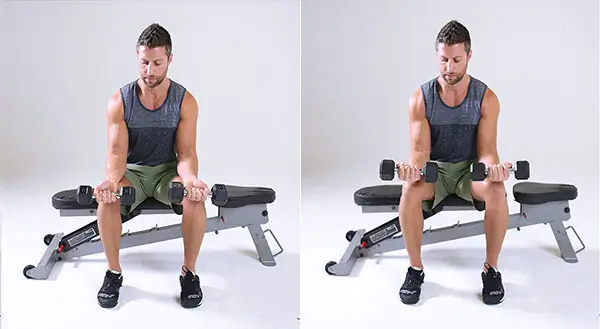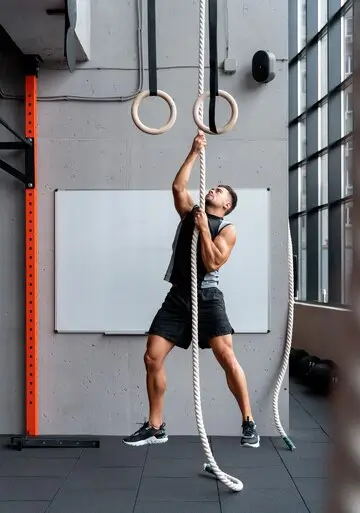Mastering Forearm Fitness: The Ultimate Guide to Powerful Workouts for Aesthetic Gains and Unrivaled Strength
In the realm of fitness, the focus often gravitates toward biceps, triceps, and chest development, but the importance of Forearm Workouts for well-developed forearms should not be underestimated. A strong grip and muscular forearms not only contribute to an aesthetically pleasing physique but also play a crucial role in overall strength and functionality.
Table of Contents

Anatomy of the Forearm
Before diving into the best forearm workouts, it’s essential to understand the anatomy of the forearm. The muscles involved include the wrist flexors and extensors, pronators, and supinators.
Achieving a balanced development of these muscles is key to maximizing the benefits of your forearm workout.
Benefits of Strong Forearms
The advantages of incorporating forearm exercises into your routine are multifaceted. Improved grip strength is perhaps the most notable benefit, but the aesthetic appeal of well-defined forearms should not be overlooked.
Additionally, strong forearms contribute to injury prevention, offering stability to the entire arm.
Common Mistakes to Avoid
As with any workout routine, there are common mistakes that individuals should steer clear of to ensure effective and safe results.
Overtraining the forearms, neglecting proper form, and ignoring adequate recovery are pitfalls that can hinder progress and lead to injuries.
Basic Forearm Exercises
- Wrist Curls: Targeting the flexors, wrist curls are a fundamental exercise for forearm development.
- Reverse Curls: Focusing on the extensors, reverse curls complement wrist curls for balanced growth.
- Farmer’s Walk: This functional exercise engages the entire forearm and enhances grip strength simultaneously.
Advanced Forearm Workout
For those seeking a more challenging workout, advanced exercises can take your forearm gains to the next level.
- Plate Pinches: Holding weighted plates with fingertips, plate pinches intensify grip strength training.
- Fat Grip Training: Thickening the handles of weights activates more muscles in the forearm.
- Rope Climbing: An excellent full-arm workout, rope climbing targets forearms, biceps, and shoulders.
Incorporating Forearm Workouts into Your Routine
The frequency and timing of forearm workouts are crucial for optimal results.
Balancing these exercises with other muscle groups ensures comprehensive development without neglecting other areas of your fitness routine.
Forearm Equipment Guide
Investing in grip trainers can significantly enhance your forearm workout.
However, for those on a budget, there are practical DIY alternatives to achieve the same results without breaking the bank.
Nutrition for Forearm Muscle Growth
Supporting your forearm workouts with proper nutrition is essential.
Ensuring an adequate intake of protein and essential nutrients aids in muscle repair and overall strength development.
Real-Life Success Stories
To inspire readers, consider sharing personal anecdotes or success stories of individuals who achieved remarkable forearm gains through dedicated workouts.
Forearm Workouts for Different Fitness Levels
Tailoring forearm exercises to different fitness levels is crucial.
Provide beginner-friendly exercises and guidance on intensity progression for those at an advanced fitness level.
Tips for Consistent Progress
Guiding readers on tracking their workouts, adjusting intensity over time, and incorporating proper rest and recovery ensures consistent and sustainable progress in forearm development.
Combining Cardio and Forearm Workout
Highlight the benefits of incorporating cardio exercises that engage the forearms, offering a holistic approach to fitness.
Common Challenges Faced
Discussing plateaus in progress and strategies for overcoming forearm soreness provides valuable insights for readers navigating challenges in their fitness journey.
Conclusion
In conclusion, dedicating time and effort to effective forearm workouts yields not only aesthetic benefits but also enhances overall strength and functionality.
Whether you’re a beginner or an advanced fitness enthusiast, the key lies in consistency, proper technique, and a well-rounded approach to forearm development.
FAQs
- How often should I train my forearms?
- The frequency of forearm workouts depends on your fitness level, but 2-3 times a week is a good starting point.
- Can I do forearm workouts at home without equipment?
- Yes, exercises like wrist curls and reverse curls can be done with household items as makeshift weights.
- Is grip strength important for everyday activities?
- Absolutely. A strong grip contributes to daily tasks like carrying groceries, opening jars, and even typing on a keyboard.
- Are there any alternatives to rope climbing for advanced users?
- Rock climbing or using a grip strengthener can be effective alternatives for advanced users.
- Can women benefit from forearm workouts the same way men do?
- Yes, women can benefit from forearm workouts, enhancing both functional strength and aesthetics.
- Should I prioritize forearms over other muscle groups?
- Balance is key. Prioritize forearms within your overall fitness routine to ensure comprehensive development.
- How long does it take to see results in forearm strength?
- Results vary, but with consistent training, you may start noticing improvements in grip strength within a few weeks.
- Can I do forearm workouts on the same day as other arm exercises?
- Yes, but it’s crucial to ensure proper rest and recovery to prevent overtraining and potential injuries.
